
We investigated homogeneous muds, turbidites, and debrites that were preserved in a 457-m deep ICDP drilling (220-0 ka) from the Dead Sea depocenter. Based on previous flash flood measuring, surface plume monitoring, and sediment traps monitoring in the lake center, we link homogeneous muds in the deep core to overflows, and link turbidites and debrites to underflows. The study bridges the gap between our understanding of modern sediment density flow processes and deposits preserved in a long-term geological record in the Dead Sea, a tectonically active subaqueous environment (Dead Sea rift zone).
- Key Points:
- We link homogeneous muds to overflows and link turbidites and debrites to underflows
- Overflows are more dominant in interglacials, underflows are more prominent in glacials
- Climate change affected the flows via changing salinity-density profile of lake brine
- Overview
In lakes and oceans, links between modern sediment density flow processes and deposits preserved in long-term geological records are poorly understood. Consequently, it is unclear whether, and if so how, long-term climate changes affect the magnitude/frequency of sediment density flows. One approach to answering this question is to analyze a comprehensive geological record that comprises deposits that can be reliably linked to modern sediment flow processes.
To address this question, we investigated the unique ICDP Core 5017-1 from the Dead Sea (the largest and deepest hypersaline lake on the Earth) depocenter covering MIS 7-1. Based on an understanding of modern sediment density flow processes in the lake, we link homogeneous muds in the core to overflows (surface flood plumes, ρflow<ρwater), and link graded turbidites and debrites to underflows (ρflow>ρwater). Our dataset reveals (1) overflows are more prominent during interglacials, while underflows are more prominent during glacials; (2) orbital-scale climate changes affected the flow magnitude/frequency via changing salinity and density profile of lake brine, lake-level, and source materials.
- Implications for turbidite paleoseismology
Turbidites from lake and ocean sediments located in tectonically active regions have been widely used for geohazard assessments. The use of turbidites as a paleoearthquake indicator normally requires a demonstration that seismicity, rather than other factors (e.g., floods), is the most plausible trigger. However, it is common that prehistoric turbidites are used as a proxy without reliable demonstration that an earthquake is the most plausible trigger.
Our present study shows that even in an active graben like the Dead Sea, the occurrence of turbidites in the sedimentary archive within a deep central depocenter is modulated by climate change and climate-driven factors (e.g., water level, water density). It has wider implications for turbidite paleoseismology and implies that in some cases to develop prehistoric turbidites as a reliable paleoearthquake indicator, comprehensive modern sediment flow monitoring is essential.
Figures:
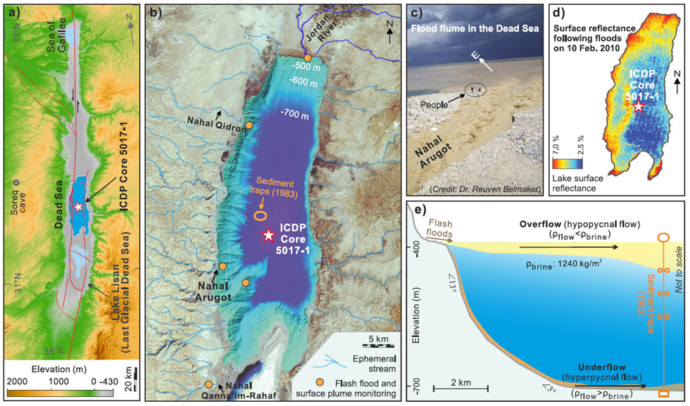
Figure 1. Location of the ICDP Core 5017-1 and modern sediment density flow processes in the Dead Sea.
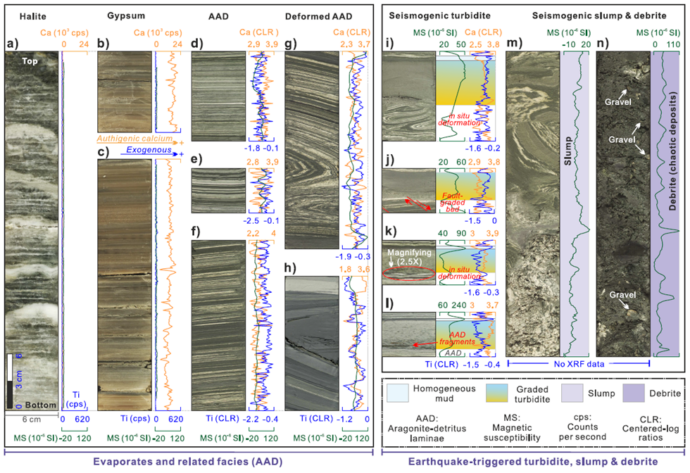
Figure 2. Basic sediment facies in the ICDP Core 5017-1.
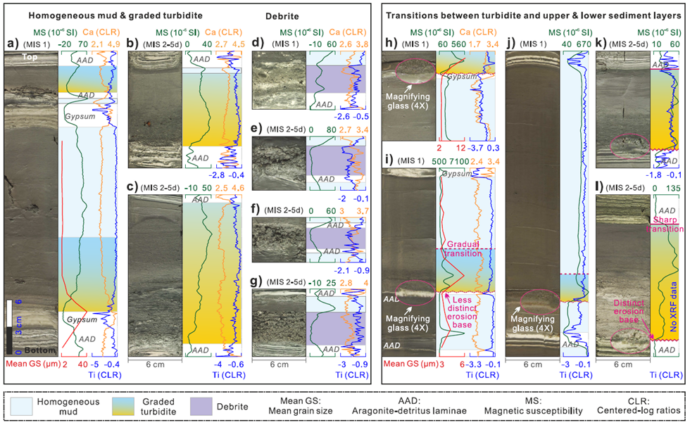
Figure 3. Typical homogeneous mud, graded turbidite, and debrite with triggers unclear in the ICDP Core 5017-1.
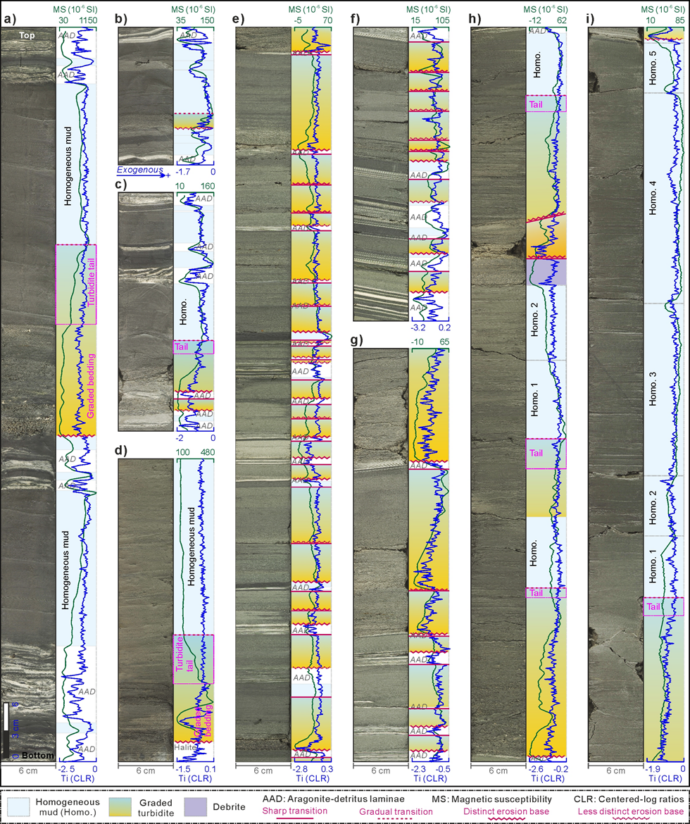
Figure 4. Core images showing turbidite tails, different transitions between turbidite and upper and lower sediment layers, and multiple sediment layers in single thick interval of homogeneous mud.
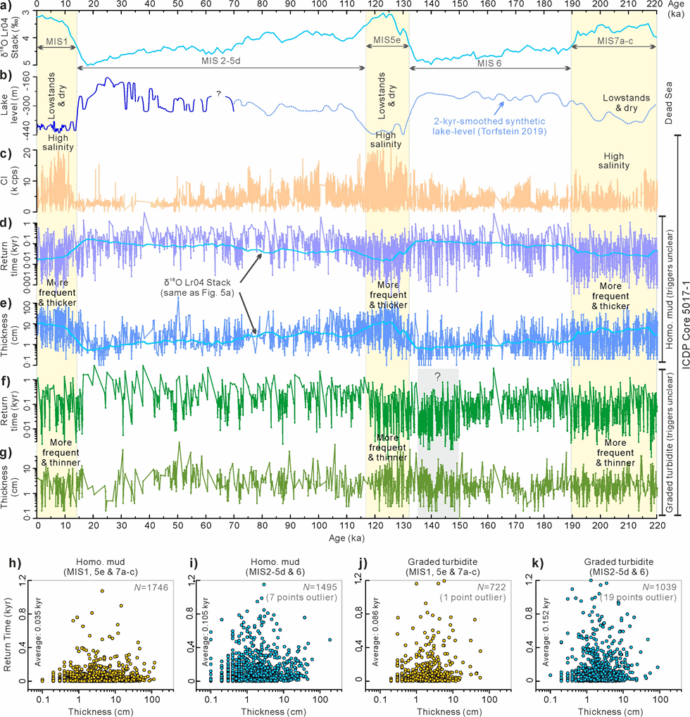
Figure 5. Records of homogeneous mud and graded turbidite (triggers unclear) from the ICDP Core 5017-1 compared to global and regional climate proxies.

Figure 6. Thickness distribution of seven facies (regardless of triggers) through glacial cycles and mechanisms for flow processes.
- More details can be found at:
(1) Lu, Y.*, Pope E., Moernaut, J., Bookman, R., Waldmann, N., Agnon, A., Marco, S., Strasser, M., 2021. Stratigraphic record reveals contrasting roles of overflows and underflows over glacial cycles in a hypersaline lake (Dead Sea). Earth and Planetary Science Letters, 594, 117723, doi: 10.1016/j.epsl.2022.117723
(Open Access) https://doi.org/10.1016/j.epsl.2022.117723
Or (2) https://www.researchgate.net/profile/Yin_Lu22
- Related Dead Sea ICDP deep drilling research:
[1] Lu, Y.*, Waldmann, N.D., Nadel, D., and Marco, S., 2017. Increased sedimentation following the Neolithic Revolution in the Southern Levant. Global and Planetary Change, 152, 199-208.
[2] Lu, Y.*, Waldmann, N.D., Alsop, G. Ian, and Marco, S., 2017. Interpreting soft sediment deformation and mass transport deposits as seismites in the Dead Sea depocenter. Journal of Geophysical Research: Solid Earth, 122, 8305-8325.
[3] Lu, Y.*, Bookman, R., Waldmann, N.D., and Marco, S., 2020. A 45 kyr laminae record from the Dead Sea: Implications for basin erosion and floods recurrence. Quaternary Science Reviews, 229 (2020), 106143.
[4] Lu, Y.*, Wetzler, N., Waldmann, N.D., Agnon, A., Biasi, G.P., and Marco, S., 2020. A 220,000-year-long continuous large earthquake record on a slow-slipping plate boundary. Science Advances, 6 (48), doi: 10.1126/sciadv.aba4170
[5] Lu, Y.*, Moernaut, J., Bookman, R., Waldmann, N., Wetzler, N., Agnon, A., Marco, S., Alsop, G.I., Strasser, M., Hubert-Ferrari, A., 2021. A new approach to constrain the seismic origin for prehistoric turbidites as applied to the Dead Sea Basin. Geophysical Research Letters, 48 (3), doi: 10.1029/2020GL090947
[6] Lu, Y.*, Moernaut, J., Waldmann, N., Bookman, R., Alsop, G.I., Hubert-Ferrari, A., Strasser, M., Agnon, A., Marco, S., 2021. Orbital- and millennial-scale changes in lake-levels facilitate earthquake-triggered mass failures in the Dead Sea Basin. Geophysical Research Letters, 48 (14), doi: 10.1029/2021GL093391



No Comments
No comments yet.